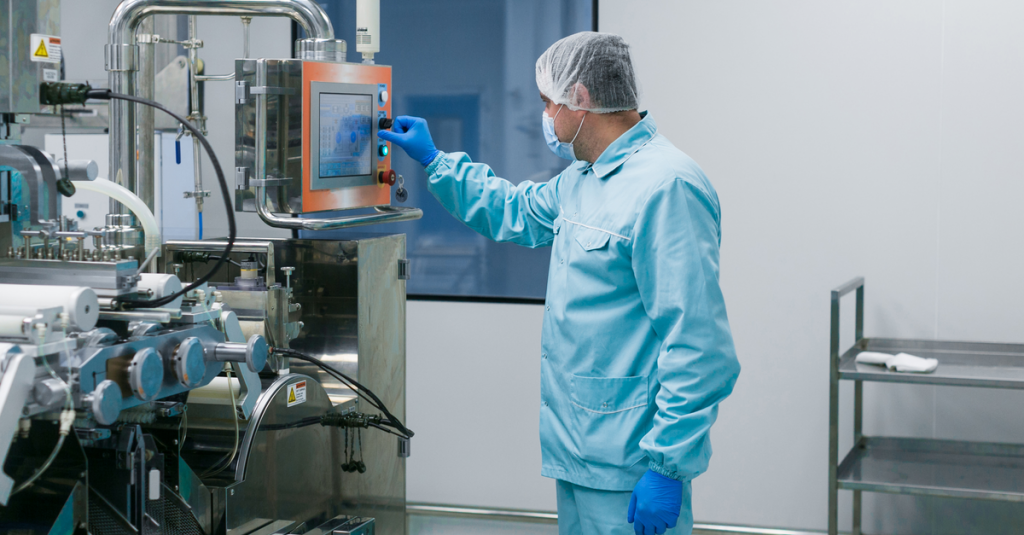As a life science manufacturer, if you want to produce high quality medicines on consistent basis, you have to have well-defined process in place for how you define and set up machine parameters in order to produce them. This process includes all necessary steps for preparation on production, from creation of recipe parameter lists and their approval, to download to machines and storage – all while adhering to GMP requirements. The process is commonly referred to as recipe management.
Through time, recipe management process significantly progressed, from its start with pen and paper, to new and more advanced approaches, like completely digital. Depending on scale, type of production and digital progressiveness, several approaches can be used, each with its own pros and cons – and German life science manufacturers are all over the spectrum.
1) Recipe management with papers only
As the name already reveals, in paper-based recipe management recipes are written on paper, the whole approval workflow defined with SOP is done on paper, parameters are manually entered in the machines and used recipe parameters are stored in paper archive. Not many life science companies employ this approach, which was widely used in the past, before technological advancements enabled proper software support for process improvement. Typically, manufacturing environments with low scale, narrow product portfolio and/or older machines that have no recipe storage or external data import enabled are proponents of this approach.
Pros:
- No investment required,
- Robust approach (pen and paper),
- Self-sufficient manufacturing site (no vendors).
Cons:
- Highly inefficient (walking around, waiting for approval, manual entries…),
- High operational costs,
- Eco-unfriendly,
- Physical archive required with employees to manage it,
- Paper audit trail,
- Data integrity risks,
- Security concerns,
- Highly prone to errors,
- Lacking overview,
- Unfriendly for regulatory audits.

2) Recipe management on machines
The next option for recipe management is the one, where machines are capable of storing recipes and users manually select them for production from there. Recipe changes and updates are done on the machines, but the workflows defined with SOPs are executed manually, on paper. Archiving is done manually based on SOPs. Precondition for this approach are machines modern enough to enable recipes storage.
Pros:
- Usage of existing machines’ options,
- Recipes stored in machine – existing recipe can be reused easily,
- Digital data backup possible
Cons:
- Still inefficient (manual data entry and selection),
- Questionable data storage (additional yearly validation activities required, impractical for audits, storage limits),
- Lacking audit trail,
- Data integrity risks,
- Audit trail,
- Security concerns,
- Highly prone to errors,
- Lacking overview,
- Impractical for regulatory audits.
3) Recipe management with SCADA system
The third option to manage recipe parameters is through custom programmed SCADA functions. The scope of automation is dependent on functions programmed by the (local) system integrator on site personnel’s demand. That is why workflows can be partially covered by SCADA, and partially manually. Typically, this option is specific for each site, as also processes, local desires / requirements, capabilities and way of working of (local) system integrator vary site by site.
Pros:
- Custom solution tailored to processes in certain manufacturing site,
- Local support,
- Exploitation of existing, installed software.
Cons:
- Custom and complex solution,
- Still lacking complete functionality,
- Hard to scale up and leverage enterprise-wise,
- Expensive and difficult to maintain in the long run (high TCO),
- Lack of best practices and long-term vision for further developments and upgrades,
- Questionable full GMP compliance,
- Dependence on single system integrator (lock-in).

4) Recipe management with DCS system
The fourth option how to manage recipe parameters, is with dedicated modules in the DCS system. The installed modules can cover many aspects of recipe management, but they are proprietary to the provider of the DCS system and can have certain limitations. Typically, this option is used in larger manufacturing environments (e.g. API, biopharma), which already have existing DCS systems in place.
Pros:
- Comprehensive recipe management,
- Exploitation of existing, installed software,
- Unified software for production execution.
Cons:
- High investment,
- Vendor lock-in (1 provider),
- Potential rigidness and inability to adapt to site processes difficult to deploy to entire production site (not all machines are usually covered by DCS),
- Not appropriate for diverse and older sites (predominantly used in new sites)
5) Recipe management with dedicated centralized software
The final option is to manage recipe parameters centrally with a dedicated software. This way, the whole process is fully supported with a software solution that is adapted to it. Thus, the process runs smoothly, doesn’t burden employees, minimizes errors and deviations, and ensures full GMP compliance (e.g. complete audit trail, built-in security and user management, electronic data exchange among stakeholders and systems). After the workflow is executed properly, the automatic download to machines can be triggered and an operator just needs only to press start. Such an approach delivers maximal benefits in environments with sizeable manufacturing that have diverse product portfolios.
Pros:
- Comprehensive recipe management,
- Covering all regulatory, procedural and efficiency aspects (process, errors),
- Favorable cost-benefit.
Cons:
- Certain machines cannot be connected (too old) – then only download to machines is done as in approaches 1 and 2.
Due to the rising requirements for more production flexibility and quality control, recipe management has undergone a massive transformation. Nowadays, several smart solutions are out there to help life science manufacturers on their journey.
One of the most modern recipe management solutions is MePIS RM, which is used already by several top 10 international life science manufacturers.




